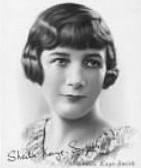Nationality English Occupation Novelist and poet | Name Sheila Kaye-Smith Role Writer | |
 | ||
Religion Roman Catholicism(prev. Anglicanism) Books Joanna Godden, Sussex gorse, Little England, Green apple harvest, The tramping Methodist | ||
MRS ADIS by SHEILA KAYE SMITH
Sheila Kaye-Smith (4 February 1887 – 14 January 1956) was an English writer, known for her many novels set in the borderlands of Sussex and Kent in the English regional tradition. Her 1923 book The End of the House of Alard became a best-seller, and gave her prominence; it was followed by other successes and her books enjoyed worldwide sales.
Contents
Life
The daughter of a physician, Sheila Kaye-Smith was born in St Leonards-on-Sea, near Hastings, in Sussex, and lived most of her life in that county, apart from a period in London in her youth. She was a distant relative of writer M. M. Kaye (The Far Pavilions).
In 1924 she married Theodore Penrose Fry, an Anglican clergyman, and in 1925 wrote a book on Anglo-Catholicism. By 1929 she and her husband had converted to the Roman Catholic Church. Penrose Fry therefore had to give up his Anglican curacy, and they moved to Northiam in Sussex, where they lived in a large converted oast house. Soon afterwards, having noted their own and some of their neighbours' need for a nearby church, they bought land on which they established a Catholic chapel dedicated to St Theresa of Lisieux, at Northiam, which still enjoys a large congregation. Sheila is buried in the churchyard there. Their house, Little Doucegrove, was later owned by novelist Rumer Godden, another female Catholic convert novelist.
A new biography of Kaye-Smith by Shaun Cooper, The Shining Cord, was published by Country Books in June 2017.
Writing
Kaye-Smith's fiction was noted for being rooted in rural concerns: the nineteenth century agricultural depression, farming, legacies, land rents, strikes, the changing position of women, the effects of industrialisation on the countryside and provincial life. Admirers of her work included her close friend G. B. Stern (with whom she collaborated on two books about Jane Austen), Thomas Hardy, and Noël Coward.
Kaye-Smith's novels straddle more than one genre of fiction. Her earliest novels partly fit into the 'earthy' rural category, together with that of Mary E Mann, Mary Webb, D. H. Lawrence, and Thomas Hardy, a genre which inspired Stella Gibbons's parody Cold Comfort Farm. Kaye-Smith gets her own back with a tongue-in-cheek reference to Cold Comfort Farm in A Valiant Woman (1939), set in a rapidly modernising village (Pearce, 2008). In a subplot, upper middle-class teenager, Lucia, turns from writing twee rural poems to the great Urban Proletarian Novel: "… all about people who aren't married going to bed in a Manchester slum and talking about the Means Test." Her philistine grandmother is dismayed as she prefers cosy rural novels, and knows Lucia is ignorant of proletarian life:
That silly child! Did she really think she could write a novel? Well, of course, modern novels might encourage her to think so. There was nothing written nowadays worth reading. The book on her knee was called Cold Comfort Farm and had been written by a young woman who was said to be very clever and had won an important literary prize. But she couldn't get on with it at all. It was about life on a farm, but the girl obviously knew nothing about country life. To anyone who, like herself, had always lived in the country, the whole thing was too ridiculous and impossible for words.
Kaye-Smith's descriptions of the Sussex countryside, coast and marsh are still regarded as some of the finest. Several of her heroines become single parents and most face various gender-related trials, reflecting her early feminism as well as influences such as George Moore and Thomas Hardy (Pearce, 2004). Kaye-Smith also produced many short stories, and journalism published in national journals, magazines and newspapers.
Arguably Kaye-Smith's most famous novel, Joanna Godden was based in Romney Marsh and filmed in 1947 as The Loves of Joanna Godden starring Googie Withers and with a score by Ralph Vaughan Williams. The screenplay by H. E. Bates has a very different conclusion to the story.
Her later books increasingly reflected her own religious preoccupations, featuring characters tussling with spiritual crises and conversions within subtle discussions of the differences between Anglicanism, Anglo-Catholicism and Catholicism. Nevertheless her plots (e.g. in The Lardners and the Laurelwoods, A Valient Woman, and Mrs Gailey) reflect pre- and post-WW2 preoccupations of women's "middle-brow" fiction of the time reflecting national anxieties about social class, divorce, and women's "role", within a mainly rural but rapidly modernising milieu (Pearce, 2004, 2005). They therefore share similarities with contemporary writers such as Barbara Pym, Marghanita Laski and H. E. Bates. Her descriptions of farming practices and economics, and village vernacular are particularly detailed and accurate for this genre (Cavalliero, 1977).
Joanna Godden and Susan Spray were reissued in the 1980s by feminist publishing house Virago. Her books are out of print, but easily available on the used book market.
Literary society
The Sheila Kaye-Smith literary society is based in St Leonards-on-Sea, meets regularly, and has published a chronology of her life and works, as well producing an annual journal, The Gleam. There are extensive archives relating to Sheila Kaye-Smith in West Sussex County Library in Chichester.
